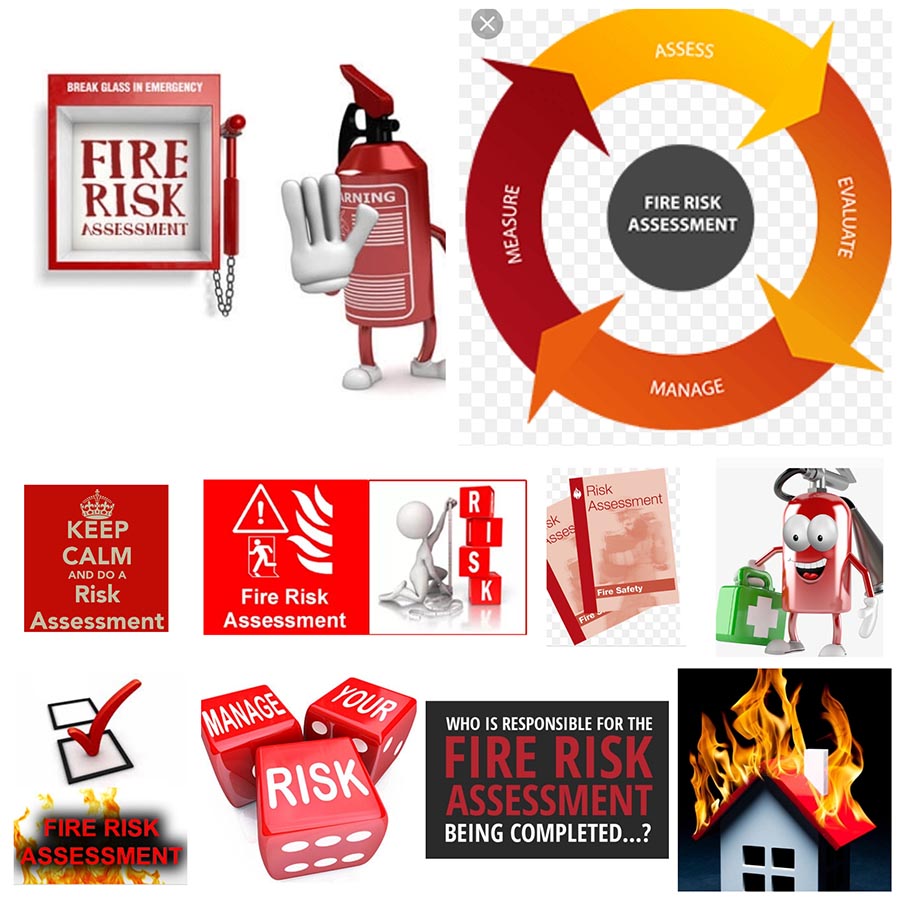

Fire Risk Assessment. In the UK it is a legal requirement for a fire risk assessment to be carried out on almost all premises where people could be working. Fire risk assessments. As the responsible person you must carry out and regularly review a fire risk assessment of the premises. This will identify what you need to do to prevent fire and keep people safe. You must keep a written record of your fire risk assessment if your business has 5 or more people within it.
What is a fire risk assessment? And what is a risk assessment for? Why do you even need this bit of paper anyway?
Let's get this straight: a fire risk assessment is designed to minimise the probability of the event of a fire by identifying the potential hazards and fire risks within a building. However, it doesn’t just examine the structure of the building itself, but the contents of the building, the layout, and the use of the building. How does the use of the building affect the fire risk? How many people are in the building? How will they escape? What steps should be taken to minimise the dangers?
For any business or public building such as shops, nightclubs, cafes, restaurants, offices, churches, and even bus and train stations, a fire risk assessment is required. This list of buildings is not exhaustive, of course, but as a rule, all non-domestic properties need to have a fire risk assessment in place. This is not an optional document and is mandatory by UK law.
But why are fire risk assessments needed?
The reason is that a fire risk assessment is required is because it is stipulated in the Regulatory Reform (Fire Safety) Order 2005 (this applies to England and Wales). In Scotland, the same applies due to legislation called The Fire (Scotland) Act 2005, in combination with the Fire Safety (Scotland) Regulations 2006. Of course it shouldn't come as a surprise that Northern Ireland has also made fire risk assessments mandatory by law, too (the Fire and Rescue Services (Northern Ireland) Order 2006, and the Fire Safety Regulations (Northern Ireland) 2010 respectively).
For the sake of simplicity we will discuss the legislation in reference to the Regulatory Reform (Fire Safety) Order 2005, which applies in England and Wales, but it is vital to note that the legislation for Scotland and Northern Ireland have broadly similar legislation that sets out the same principles as England and Wales. Either way, wherever you're from, you should remember one simple thing: there is no escaping fire risk assessments as they are mandatory by law.
The Regulatory Reform Fire Safety Order 2005 was designed to replace all previous pieces of legislation regarding fire safety, streamlining the requirements within England and Wales. It is recommended that employers and other responsible persons such as housing associations, schools, hospitals, and landlords familiarise themselves with the legislation so that they understand the requirements.
Simply put, the legislation states that a fire risk assessment must be carried out, but it also lists a whole range of other requirements such as: who can do a fire risk assessment, who is responsible in the event of a fire, procedures for serious and imminent danger and for danger areas, what provision of information should be given to employees, as well as how the Order is enforced. It is important to understand that failure to comply with the Regulatory Reform (Fire Safety) Order 2005 could result in prosecution resulting in fines that could be tens of thousands of pounds, depending on the number of breaches. In some cases, guilty parties end up with a prison sentence.
